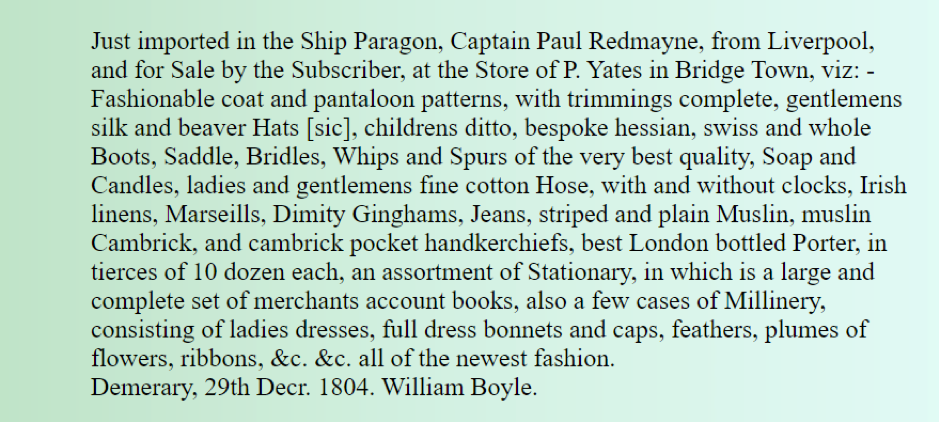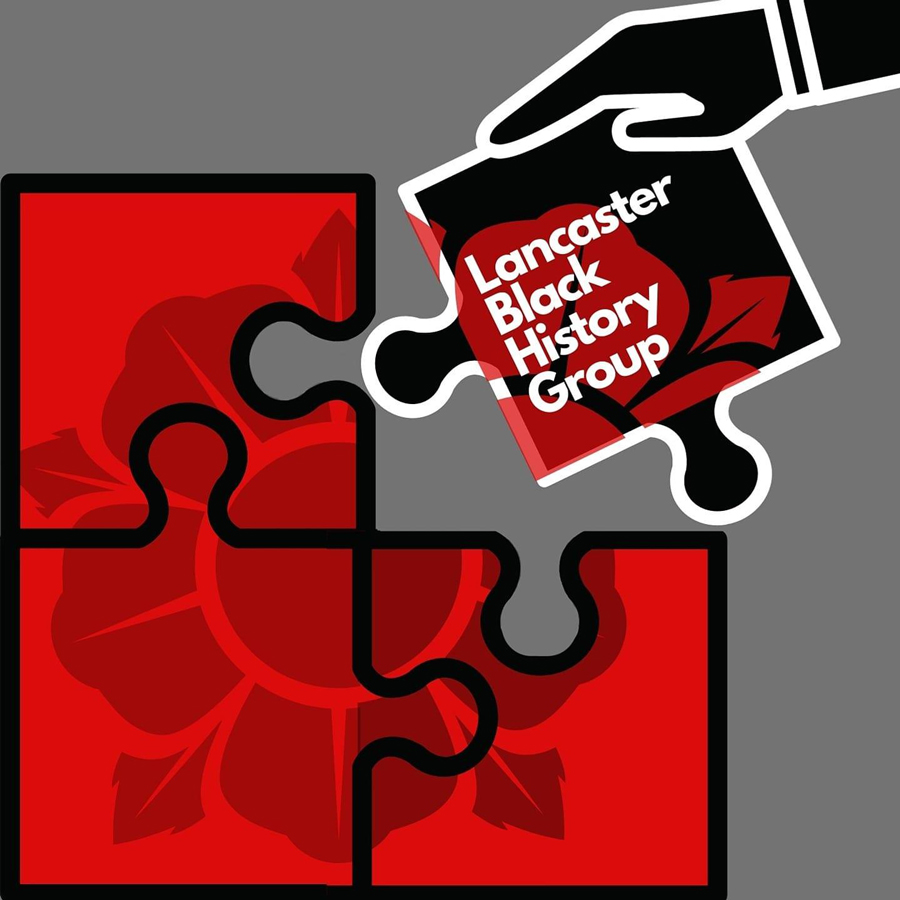Isla Tomlinson & Filip Stuchlik (Sixth form students at Lancaster Royal Grammar School)
There is a street on Lune Industrial Estate on the New Quay in Lancaster with the name Paragon Way. New Quay extends down from, St George’s Quay, Lancaster’s 18th century river side port. The dictionary definition of Paragon is ‘a person or thing regarded as a perfect example of a particular quality.’ Given Lancaster’s rich maritime history, it is likely the name has some naval connotations, as seems to be the case for many streets on New Quay.
The development of a substantial quayside in 18th century Lancaster was a consequence of its growing West Indies trade in goods such as sugar, cotton, rum and mahogany, and its associated involvement in the Trans-Atlantic slave trade, which supplied the enslaved labour force for European colonies and plantations in the New World.
Paragon was a common name for merchant ships throughout the Age of Sail. A ship called Paragon was built in Lancaster and launched from the quay in 1801. By taking closer look into this ship’s voyages and connections, we saw an interesting story unfold.
The Lancaster ship Paragon (1801) was captained by Lancastrian William Hart, and also by anther Lancaster man, Paul Redmayne. The ship is listed as initially owned by Ridley and Dodson, and was described as a ” fast sailing copper bottomed ship” in the Lancaster Gazatteer. Hart, although born in Kirkby Ireleth, lived much of his life in Lancaster and would have spent a large amount of time at the Quay, very much in the vicinity of where the street now lies which shares the name of his ship. “William Hart captained various ships from 1790 including the Rawlinson. He was listed as owning a share in Paragon in the shipping register.” (Elder and Winstanley, email correspondence with authors, 2021).
In 1803 the Paragon was attacked off Barbados, resulting in a battered ship returning to the Lune the following year (account of this in Sun (London) 11 Oct 1803)
By researching shipping registers, we found that the Paragon primarily traded across the Atlantic to the West Indies, South America and North America. Perhaps her most notable trade route was established with Demerara on the South American coast (now part of Guyana) which due to the colony’s production of sugar cane, lent its name to Demerara sugar.
Lancaster – Demerara
Demerara was a great source of wealth for Britain, not just thanks to its sugar plantations but also due to the tax-funded compensation for manumission; where slave owners were compensated by the government for loss of ‘property’ after slavery was abolished in British overseas colonies in 1833. It was argued at the time that this compensation was the only viable way of ending slavery in the British Empire.
Professor Imogen Tyler has written about some of the historic threads of connection between Guyana and Lancaster in this blog. The story of the Lancastrian merchant ship Paragon is another link between Lancaster and this South American colonial plantation society.
Lancaster based merchant, John Bond was the owner through inheritance of plantations in Demerara, including one called Lancaster. Bond received what would be £2million in compensation, in today’s money. Interestingly, and as the historian Nick Draper has detailed owners of enslaved people in Guyana were more handsomely compensated than in many other places, such as Jamaica. It was common for British merchants, slave traders, and slave owners to use the wealth they acquired in order to gain political influence and status and therefore wield parliamentary influence on policies which effected their business. Some of the individuals and families who profited from plantation slavery (and its abolition) would go on to form significant political and business dynasties in Britain –one of these was John Gladstone (1764-1851), a Scottish born and Liverpool based merchant and slave owner, who had large sugar plantations in Jamaica and Guyana, and was for 2 years MP for Lancaster (1818-20). His son, William Ewart Gladstone, became the British Prime minister, and used his maiden speech in parliament to defend the interests of British Sugar plantation and slave owners.
As a merchant vessel, Paragon seems to be not only importing plantation goods but is exporting all kinds of items into the colony. It listed in the Guyana Colonial Newspapers as a trader in fashionable goods, bringing amongst other items ‘fashionable coats’ and ‘ladies dresses’ from Lancaster to the wealthy inhabitants of the colonies – with thanks to historians Melinda Elder and Mike Winstanley for drawing our attention to this evidence.

The Paragon as a Privateer
The Lancastrian ship Paragon was not just a merchant vessel, but a military one. Captain William Hart acquired a letter of marque following the resumption of the Napoleonic Wars (1803–1815) with France, permitting it to attack and capture foreign vessels. Thus, the Paragon became a privateer and on August 12th1803, the Paragon captured the French ship Harmonie south of the Azores and sent her into Lancaster. This newspaper clipping (below right) from the London Morning Chronicle, Friday, Aug. 19, 1803, describes the cargo captured with the L’Harmonie which included 307 bales of cotton, 20 bundles of buffalo hides, 985 hundred pound weight of Campeachy Wood. This cargo was sold in Lancaster.

The L’Harmonie joined the Lancastrian West-Indies fleet, and is recorded making several trips across the Atlantic. The Lancaster Gazetter ‘s “Ship News” from August 1804 reveals interesting details about the Lancaster West-Indies fleet and their cargoes, including L’Harmonie, who has arrived laden at Lancaster St George’s Quay from Demerara with plantation goods (produced by enslaved Africans), including 295 bales of cotton, 120 casks (likely of molasses or rum), and 281 bags of coffee.
On what must have been the same trip during which the Paragon had captured L’Harmonie, she had herself been subject to attack off the coast of Barbados by a French schooner of 12 guns and 100 men — it must have been a somewhat battered Paragon which returned to Lancaster.
The Paragon in the Anglo-American War
By 1806 the Paragon had been sold to Liverpool owners (as was L’Harmonie). The Paragon entered an engagement again 10 years later on April 3rd 1813 when it sailed to Buenos Aires in company the company of British ship William. On this voyage, they encountered the American privateer ship Grand Turk, armed with a crew of 130 men and 16 guns. The Grand Turk was commissioned by American President Madison (himself born into a Virginia planter family) ‘to cruise against the enemies of the United States’. After 17 minutes the British vessels struck. William suffered the death of two men and wounding of six others. At the time the Anglo-American War of 1812 was being fought, a conflict that seems almost forgotten today. The most significant event of this war was the British burning of Washington where the troops set fire to multiple government and military buildings, including setting fire to the White House on August 24 1814.
This marks the only time since the American War of Independence that a foreign power has captured and occupied the capital of the United States. As a consequence of this encounter, Paragon was trapped under American control. However not for long, as it was soon recaptured by HMS Tenedos.

The Paragon, a ship built and launched in Lancaster, which began its life under a Lancastrian captain, with Lancaster owners, should be remembered and acknowledged for its role in the historical narratives of plantation economies, as well as British-American warfare, as despite only having stints in these events it was undoubtedly part of these greater narratives which were responsible for shaping the world at the time. In what is a period of reassessment of Britain’s colonial past, it seems logical to examine and question Lancaster’s street names and the stories from which they may be derived.
ABOUT THE AUTHORS
Written by Isla Tomlinson and Filip Stuchlik, sixth form students, LRGS. Edited by Isabella Tyler, Imogen Tyler, with additional historical input from Melinda Elder and Micheal Winstanley. This blog was written as part of our series with students from local schools in Lancaster.
HOW TO CITE
Isla Tomlinson and Filip Stuchlik (2021) A Lancaster ship called Paragon: From St George’s quay to the burning of the White House, Lancaster Slavery Family Trees (Blog), available at https://lancasterblackhistorygroup.com/2022/11/25/a-lancaster-ship-called-paragon-from-st-georges-quay-to-the-burning-of-the-white-house/
